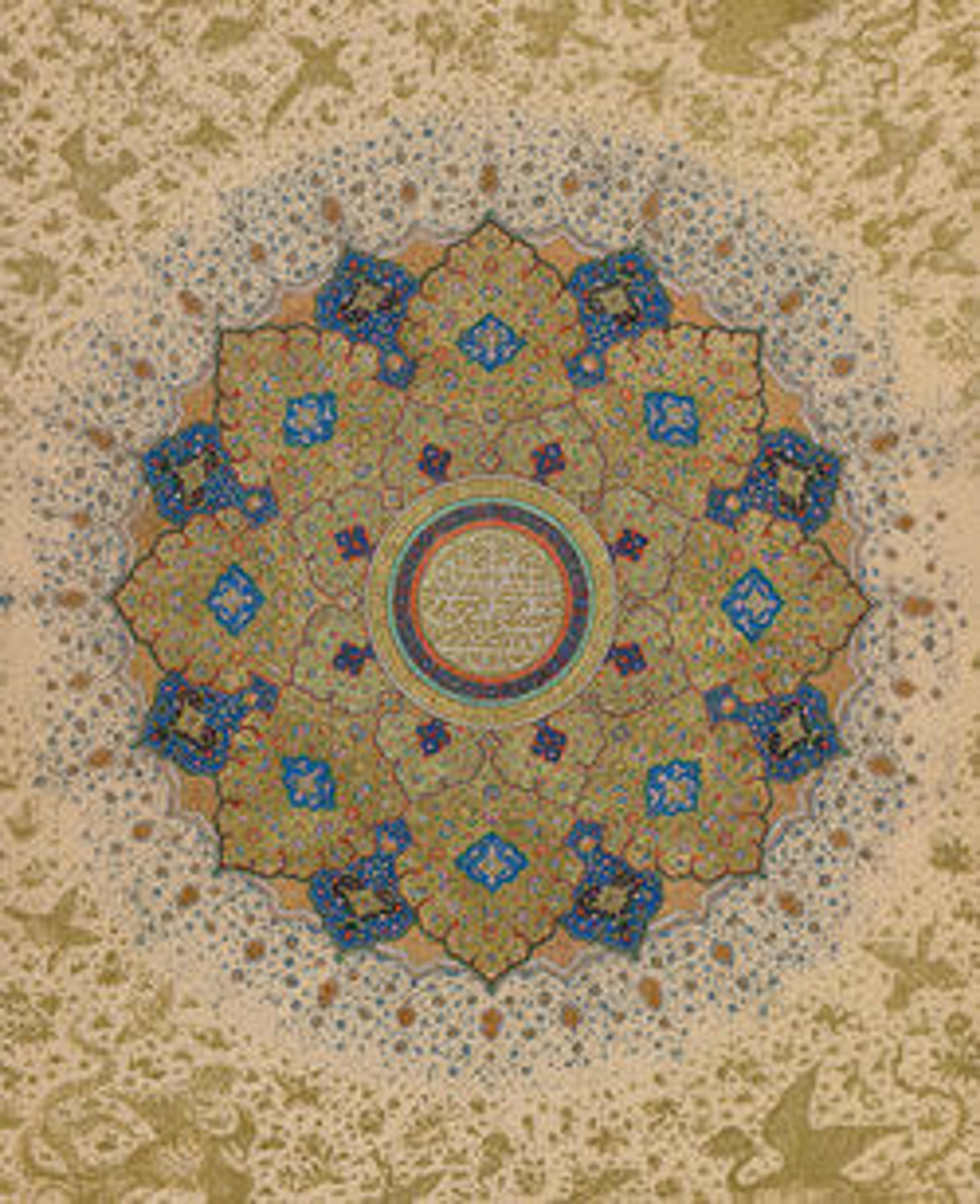Lacquer Mirror Case
The exquisitely painted mirror case has a tan ground covered with a graceful gold grapevine scroll over which the main design has been painted in delicate shades of black. The artist, Fathallah Shirazi, has signed his name and given the date (1295/1878) on one side of the case. The inscription on the other side alludes to the patron but does not give his name. Fathallah was court painter to Nasir al-Din Shah (r. 1848–96), and was highly regarded for his lacquerwork, which is known primarily from a number of penboxes. These most often have a black ground onto which oval scrolls and swags of roses are painted in gold. On this mirror case, however, a variety of sleek birds and robust butterflies are scattered among branches bearing a dazzling array of sumptuous blossoms and bursting buds. This early work of the painter would appear to be the only known example in this particular style.
Artwork Details
- Title:Lacquer Mirror Case
- Artist:Painting by Fathallah Shirazi (Iranian, active 1850s–80s)
- Date:dated 1295 AH/1878 CE
- Geography:Made in Iran
- Medium:Papier-maché; painted, gilded, and lacquered
- Dimensions:H. 2 1/2 in. (6.4 cm)
W. 6 1/16 in. (15.4 cm)
D. 3 1/2 in. (8.9 cm) - Classification:Lacquer
- Credit Line:Gift of Irma B. Wilkinson, 1979
- Object Number:1979.460.2a, b
- Curatorial Department: Islamic Art
More Artwork
Research Resources
The Met provides unparalleled resources for research and welcomes an international community of students and scholars. The Met's Open Access API is where creators and researchers can connect to the The Met collection. Open Access data and public domain images are available for unrestricted commercial and noncommercial use without permission or fee.
To request images under copyright and other restrictions, please use this Image Request form.
Feedback
We continue to research and examine historical and cultural context for objects in The Met collection. If you have comments or questions about this object record, please contact us using the form below. The Museum looks forward to receiving your comments.
